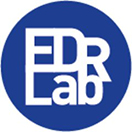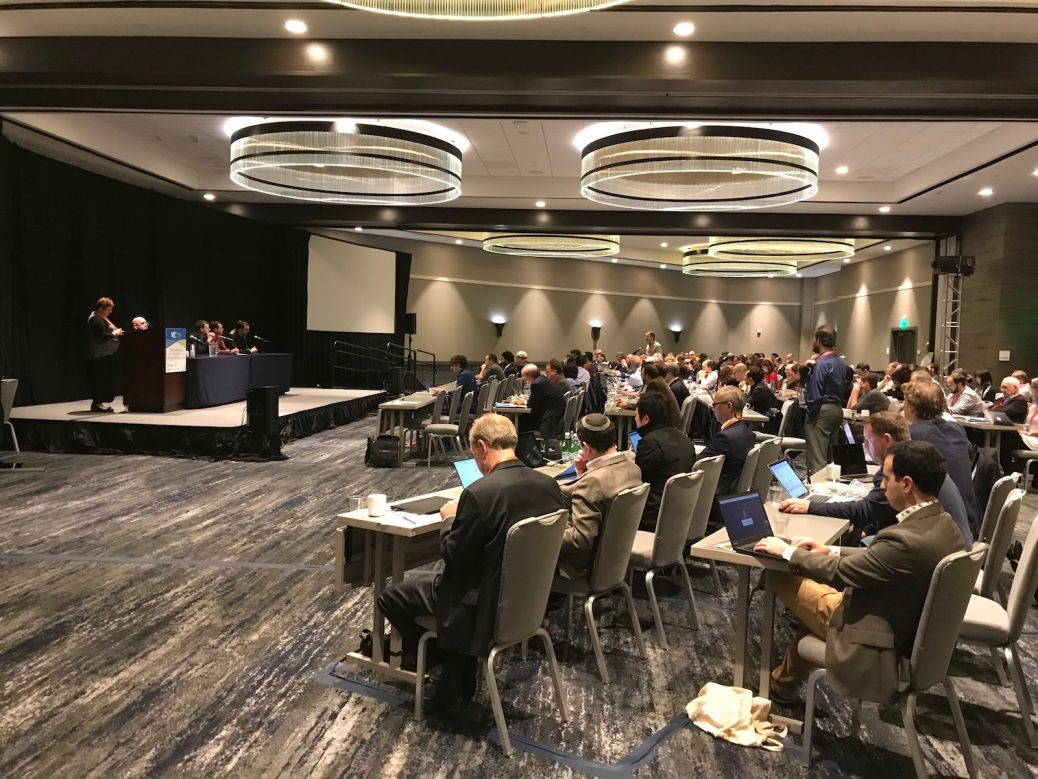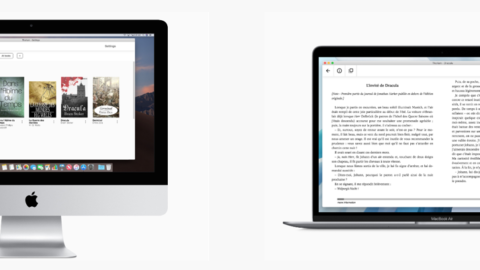The first W3C Publishing Summit was held in Burlingame (not far from San Francisco) on November 9th and 10th, during the annual W3C Technical Plenary meeting (called TPAC).
I went to Burlingame for the two events, as participant to the work on Web Publications, introduced here, and later as a panel speaker on the different states of ebook markets worldwide.
Tzviya Siegman has written a post on the W3C blog, about the current work of the W3C Publishing Working Group. As you will see, some matters of discussion are still at a requirement level, when others are more about how to reuse existing W3C works (often work in progress, not stable standards). In parallel, the EDRLab team is prototyping the use of a Web Publication Manifest at the core of the Readium 2 architecture. We hope that when the time comes, the WG will focus on the merits of this implementation.
Regarding the Publishing Summit, you’ll find a very good post from Teresa Elsey on EPUB Secrets. And an interesting reaction from David Bergsland on how he thinks that the ebook future grows complex. My take on this is that we must make so that the ebook future is less complex, no more. We therefore must work on two axes: EPUB 4 must be a simpler EPUB. And EPUB based reading app developers must accept a common processing model. For that, Apple, Google, Kobo, Readium etc. must talk together and we may add a standard processing model layer to Web Publications and EPUB 4.
The panel about the different ebooks markets was moderated by Cristina Mussinelli from the Italian Publishers Association. Yasushi Fujita, Founder & CEO Media DO, introduced the Asian market with a focus on Japan; Julian Calderazi from DigitalB talked about the South American market, and I described the European market.
For those interested, I published my slides on the EU ebook market here. And here is the “sound”:
Slide 1
Sources of data:
- Federation of European publishers
- Global ebook report (Rüdiger Wischenbart)
- L’édition en perspective, French publishers association
Slide 2
Europe: 44 countries (source UN), 90+ languages (24 official in the EU)
This is to show that Europe is a region with many different cultures and an pretty solid publishing industry.
Slide 3
The digital book market is still lightweight, and numbers are very different depending the country and the way you look at it. In 2015, the range was from 3% to 11% of the total book market, if only ebooks are considered. The agreed average in Europe is around 6 to 7%. If all digital sales are taken into account – especially professional database subscriptions – numbers are quite higher, as you can see on the screen.
Slide 4
But there are “hidden” market shares:
1/ We feel that Self Publishing is strong, even if we lack numbers:
-
- In the UK, it represents 22% of the ebook market in units in 2015
- In Germany, with Tolino, it represents 20% of all units sold, and 40% for Amazon% in 2016
2/ Web subscriptions are strong, essentially for professional and educational publications. I read that digital sales represent in France 40% of the revenue associated with university and professional publications. Think about medecine and legal.
3/ we should not forget that not all long form publications are ebooks from traditional publishers. For instance, the market of business reports is not taken into account in statistics.
4/ and there is the audiobook market, which make a lot of noise currently.
Slide 5
Let’s come back to standard books. Europe is a land of booksellers. With all these different cultures, one algorithm cannot fulfill all desires. Booksellers provide recommendations to users: discovery & serendipity are essentially provided by humans today. Many are purely brick & mortar, often small shops in city centers. Bigger brands have a strong digital presence. The EU instances defend such diversity with different laws and directives.
Slide 6
Before we detail who are these European booksellers, let me give you some context:
- The EU VAT is high for services: 15 to 27%.
- Printed books benefit from a low VAT targeting cultural goods. Since this year, ebooks benefit from the 5% VAT in Europe at large. France and Italy had chosen to apply this cultural VAT some years ago.
- Also, book prices are fixed by the publishers in many EU countries. In such countries, the digital prices is often 20 to 30% lower than the print price.
Despite this particular context, Amazon is leader in EU countries. It is very largely dominant in the UK, a country which has no fixed price for ebooks.
The other global platforms, Google and Apple, are also present, but you’ll also find regional or local booksellers like Tolino from Gernany, FNAC or Cultura from France.
These ecommerce platforms use technologies from companies like KOBO, TEA, Bookeen, Artatec, and they distribute EPUB files, either protected by DRM (Adobe until now), watermarked or with no specific protection.
Slide 7
Which leads me to EPUB versus other publishing formats, in Europe. Here are some figures from France. I suppose they are globally similar for other EU countries. We interpret them as:
- EPUB now THE publishing format in Europe. The Amazon formats are created out of the EPUB document.
- But PDF is still strong in catalogues, especially for non-fiction. This is logical because when a book has been released some years ago in PDF, no EPUB version will usually created to replace it.
The real issue is that the EPUB brand is still not recognized by end-users. It means that if a website offers both PDF and EPUB formats, many end users will choose the PDF format. This is evident for professional publication. Which is a pity when we consider all the advantages of the EPUB 3 format.
This is why, as a community, we need to make strong efforts to develop a modern and open publishing ecosystem in Europe.
EPUB 2 vs EPUB 3?
Some countries, like Italy, still didn’t really move form EPUB 2 to EPUB 3, and EPUB 2 is still strong in fiction everywhere.
But publishers are moving to EPUB 3, for the following reasons:
- Better typographic capabilities, thanks to the use of HTML5 and CSS3.
- Doing so, they will avoid distributing files which could soon be obsolete: we don’t know how much time browser engines will properly support XHTML1, on which EPUB 2 is built.
- Fixed layout, for specific needs.
- Better accessibility, thanks the efforts of the DAISY consortium, which has chosen EPUB 3 as the new format of accessible publications.
- Doing so publisher can reach a new market: people with “print disabilities”, blind, dyslexic people.
Some big publishers are moving their entire production to native accessible EPUB 3: it is notable that they can get it with NO additional cost. This move is smart, as the European Accessibility directive (2018) will make accessibility mandatory for cultural products in Europe.
EPUB 3 is heavily promoted in Europe by EDRLab, with 40 members so far; we think that the awarness about EPUB 3 is raising and should soon make things evolving.
In France we are actively helped by the Publishers association (SNE), which has just released all titles from the literary season in accessible EPUB 3, free for people with disabilities.
Is it only a matter of format?
With the Readium open-source project, the lack of EPUB 3 compliant reading apps is a thing of the past.
And EDRLab leads the development of a new generation of Readium software,
- easy to integrate and optimized for mobile and desktop apps,
- totally free,
- with support for the Readium LCP DRM,
- capable of reading EPUB 2, 3 … and soon Web Publications and EPUB 4
This is the Readium 2 project.
Which are the features you consider relevant for the future development of the standard?
Web Publications are a new opportunity for publishers of all sorts, this new standard is a feature of its own; it could trigger new business models, new ways to expose personalized extracts: we must think early about these possibilities .
On the EPUB side, it will be difficult to obtain more from the standard if we only modify its internal plumbing.
I’ll insist on three points, and the first one is not a feature:
1/ Put lots of attention on interoperability
Letting authors create whatever HTML and CSS they like and believe that they will play perfectly in every reading app, with very different baseline CSS, especially different ways of paginating, is naïve.
We may help cure that:
- by creating better interop “guidelines” for EPUB authors,
- by pushing reading app developers to talk together,
- by avoiding optional modules scarcely implemented by reading apps …
This is may be the biggest challenge we face.
2/ Offer an optimized support for audiobooks, with enhanced navigation (metadata)
This is of interest for commuters as it is of utmost importance for people with disabilities.
3/ Offer an optimized support for visual narratives (i.e. comics, mangas, bande dessinée).
This manga industry is huge in Asia but it does not use EPUB; same for digital comics. We must understand why, and make the necessary. A new line of products may arise in the EPUB world if we add the proper features to our future standards, like transitions and parallax effects.














 contact@edrlab.org
contact@edrlab.org +33 1 83 64 41 34
+33 1 83 64 41 34
